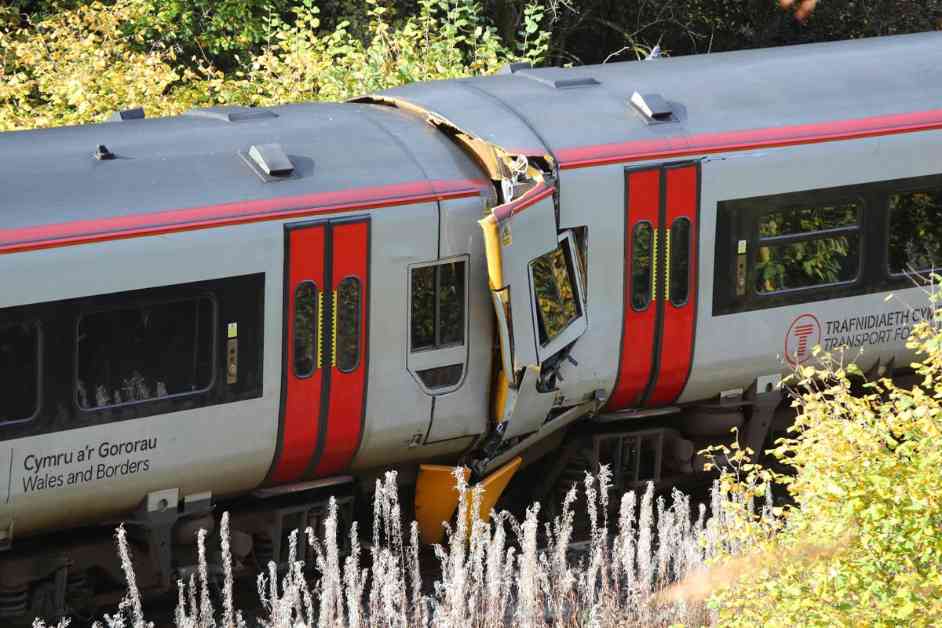The recent train crash in Wales that resulted in one passenger’s death and several injuries was caused by a safety system failure, according to the Rail Accident Investigation Branch (RAIB). The system, which is designed to help train wheels grip tracks by automatically discharging sand through hoses when wheels are sliding during braking, malfunctioned on the train involved in the crash.
The investigation revealed that the sanding hoses on the leading vehicle of the train were blocked and unable to discharge sand, leading to a loss of friction between the wheels and the tracks. This failure ultimately resulted in the tragic collision that claimed one life and left others seriously injured.
Passenger Anthony Hurford, who was on the Shrewsbury-bound train, described the collision as “brutal” and shared his shock at the sudden impact that brought the train to a halt. The train involved in the crash was a two-carriage class 158 unit traveling to Aberystwyth, and it was supposed to stop within a loop to allow another train to pass on the single track.
Analysis of the on-board data recorder indicated that the driver applied the brakes as the train approached the loop, causing the wheels to slide. Despite making an emergency brake demand shortly after, the train continued downhill for about 900 meters before the collision occurred.
In the aftermath of the crash, a close family friend of the deceased passenger criticized the British Transport Police (BTP) for allegedly failing to provide adequate support to the family. The BTP later issued an apology for any miscommunication and assured that the family of the deceased was being supported by specialist officers.
The tragic incident serves as a reminder of the importance of ensuring the proper functioning of safety systems on trains to prevent such accidents from occurring in the future. It also highlights the critical role of timely and effective support for the families of those affected by such devastating events.












